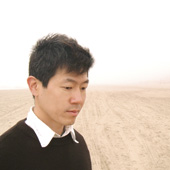Spring Park Urai Resort -- Wulai, Taipei
The town of Wu▪lai (烏來), tucked in a narrow green valley in the southern outskirts of Taipei, is famous for its interesting blend of aborigine culture and natural carbon springs. It is a quick day trip from the adrenaline filled city, or, for the locals, an ideal weekend getaway for some needed R&R. I came here on a weekday morning to bathe in solitude and sample some nouveau approach to Taiwanese cuisine.
 I had first read about Spring Park Urai Resort (春秋烏來; chun▪qiu▪wu▪lai) in, of all places, a Japanese lifestyle magazine. It is one of the newer entrants to Wulai’s
I had first read about Spring Park Urai Resort (春秋烏來; chun▪qiu▪wu▪lai) in, of all places, a Japanese lifestyle magazine. It is one of the newer entrants to Wulai’s
On a Friday morning I took the MRT and then a taxi to get here, arriving before the first weekend crowds, so that I was left to the three men’s pools basically to myself, save for the birds, the trees, and the jade-colored river flowing alongside, to soak up the carbonate-based springs, which, unlike sulfur-based springs, is both colorless and odorless, and helps soothe the soul and clarify the senses.
 After the bath, I skipped the other spa treatments and headed straight to the dining room. For lunch, I was particularly interested in the chef’s four-course “Wulai Classics,” which according to the menu is: “Sample the traditional flavors of local Wulai ingredients, As translated through the prism of the chef’s training in Italy, While you are surrounded by the natural beauty of Wulai, Making this an unique experience worth savoring.
After the bath, I skipped the other spa treatments and headed straight to the dining room. For lunch, I was particularly interested in the chef’s four-course “Wulai Classics,” which according to the menu is: “Sample the traditional flavors of local Wulai ingredients, As translated through the prism of the chef’s training in Italy, While you are surrounded by the natural beauty of Wulai, Making this an unique experience worth savoring.
 The meal began with Deep-fried River Shrimp with Basil and Apple. The frittery pieces of batter-fried shrimp were lightly tossed with salt and pepper. The river shrimp were light and crunchy, with a delicate sweetness to complement the more floral sweetness of the basil. I didn’t care much for the apples—they were too tart, and cut too chunky to be too awkward to eat.
The meal began with Deep-fried River Shrimp with Basil and Apple. The frittery pieces of batter-fried shrimp were lightly tossed with salt and pepper. The river shrimp were light and crunchy, with a delicate sweetness to complement the more floral sweetness of the basil. I didn’t care much for the apples—they were too tart, and cut too chunky to be too awkward to eat.

 I was really looking forward to the Poached Trout Stuffed with Shiitake and Millet Mousse, the main event; however, it turned out a disappointment. Trout is a tender and mild-flavored fish. The chef poached it in rice alcohol, making it even more tender. That was the good part. The bad part, I didn’t like the use of millet as stuffing. While I understood the point of injecting a starch into the dish, I would have liked it more on the side instead of being layered between the fish. The millet was soggy and textureless, and flavor-wise there was nothing unique worth savoring.
I was really looking forward to the Poached Trout Stuffed with Shiitake and Millet Mousse, the main event; however, it turned out a disappointment. Trout is a tender and mild-flavored fish. The chef poached it in rice alcohol, making it even more tender. That was the good part. The bad part, I didn’t like the use of millet as stuffing. While I understood the point of injecting a starch into the dish, I would have liked it more on the side instead of being layered between the fish. The millet was soggy and textureless, and flavor-wise there was nothing unique worth savoring.
 The last course, a dessert, was Preserved Plum and Tea Jelly with Wild Berry. In the tradition of too many East Asian desserts I’ve tasted, this one was another vile attempt to transform a Western craft for the Eastern palate. As I saw it, the chef envisioned pairing preserved plums, a typical tea snack, with oolong tea, the famous produce of
The last course, a dessert, was Preserved Plum and Tea Jelly with Wild Berry. In the tradition of too many East Asian desserts I’ve tasted, this one was another vile attempt to transform a Western craft for the Eastern palate. As I saw it, the chef envisioned pairing preserved plums, a typical tea snack, with oolong tea, the famous produce of
I have always viewed
To reach Wulai and the Spring Park Urai Resort, take the MRT to the end of the line at Xin▪dian (新店), and then take a taxi for the 15 minute trip upmountain. Ask the driver to drop you off at Spring Park (春秋烏來; chun▪qiu▪wu▪lai).
Labels: hot springs, taipei, taiwan, wulai


0 Comments:
Post a Comment
<< Home